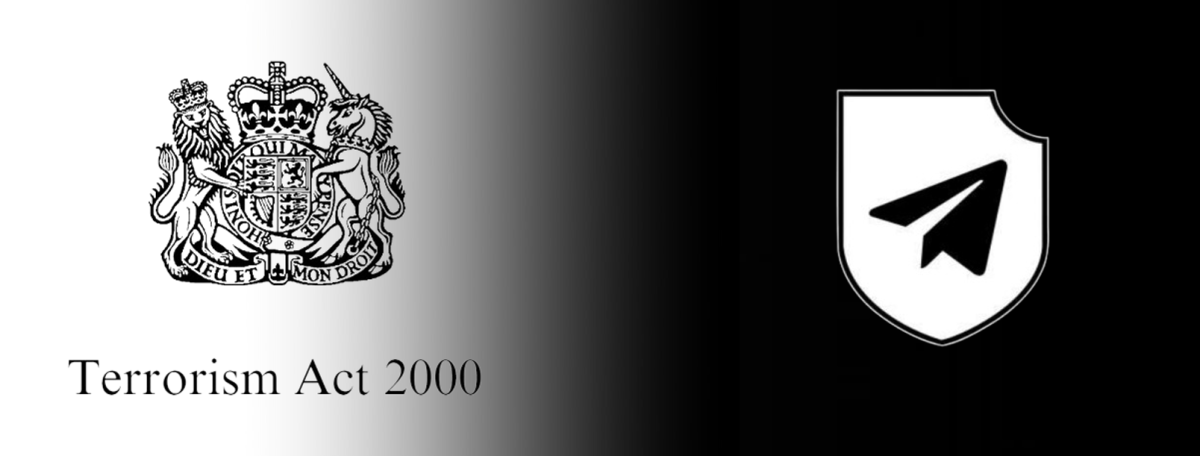Introduction
On 22 July 2011, Anders Breivik carried out the deadliest terrorist attack in Norway’s history, killing 77 and injuring 320 others. In the hours before he commenced his attack, Breivik first uploaded his 1,518 page manifesto, A European Declaration of Independence – 2083 to the internet.
Breivik’s manifesto has since become “the baton in a relay race of extremists, passed from one terrorist murderer to the next through online communities”, as extremism researcher J.M Berger has remarked. Ever since the Christchurch attacks in 2019, a chain of far-right mass shootings has unfolded involving perpetrators who similarly distributed their manifesto online prior to their attacks. This Insight will reflect on the legacy of the 22 July attacks in establishing the template subsequent far-right terrorists have imitated, examining the evolution of online manifestos since the 2011 attacks and the legacy of Breivik’s manifesto within far-right digital subcultures.
Background: The 2011 Norway attacks and Breivik’s manifesto
On the afternoon of 22 July, Breivik parked a rental van packed with homemade explosives outside buildings in the Government Quarter in central Oslo. After he switched vehicles and drove away from the area, the bomb exploded, killing eight and injuring over 200. Less than two hours later, he then arrived at Utøya island, where the Labour Party-affiliated youth organisation the Workers’ Youth League (AUF) held their annual summer camp. Once ashore, he immediately began firing at the attendees. For over one hour, he roamed the island and killed indiscriminately, murdering 69 people, nearly half of whom were under eighteen. The massacre ended when he eventually surrendered to police.
In Breivik’s court testimony, he claimed the primary objective of his attack was to gain publicity for his manifesto, which he described as a “compendium” made up of three “books”. In the first book, he provided a quasi-historical overview of Islamic imperialism and set out to counter what he perceived as an anti-European “revisionism” of history. Book two, titled “Europe Burning”, described the threat to Europe by “Cultural Marxism” and “Islamisation”. Finally, book three, “A Declaration of preemptive War”, consisted of a self-interview, a detailed manual for terrorist actions, and diary entries documenting his preparations up to the day of the attack.
A template for terror?
In comparison with the post-Christchurch wave of attacks, Breivik’s 2011 atrocity stands out for two reasons. First, Breivik attacked those he perceived as “traitors”, namely, ‘Cultural Marxists’ whom he deemed responsible for facilitating the “destruction” and “Islamisation” of Europe. Jacob Ware has characterised this target selection as a rare example of a far-right attack against the “near enemy”, borrowing the salafi-jihadist differentiation between the “near enemy”, represented by pro-Western regimes in Muslim countries, and the “far enemy”, referring to the United States, who supported them. Most far-right attacks since Breivik, including those in Christchurch, Poway, and El Paso, have targeted what they perceive as far enemies, such as Muslims, Jews, and minority communities viewed as outsiders and invaders. Far-right attacks against the near enemy hardly occur, with the exception of isolated cases like the murder of British Labour MP Jo Cox in 2016.
Secondly, Breivik’s attack method – a combination of car bombing and shooting- has not been replicated since. As Macklin and Bjørgo note, this suggests his tactical influence was limited. Breivik, who originally wanted to build three bombs but adapted his plans due to limited resources, initiated his attack by detonating a 950 kg bomb made of a mixture of ammonium nitrate fertiliser and fuel oil (ANFO), just as Timothy McVeigh used in the 1995 Oklahoma City bombing. Today, mass shootings have instead emerged as the sole favoured tactic in far-right terrorist attacks, although this is likely down to the complexity of explosives and comparative simplicity of firearms.
While Breivik’s atrocity remains distinct for these reasons, his act of combining a manifesto with his attack has been his defining legacy which continues to be repeated. This is evidenced through Brenton Tarrant, the perpetrator of the 2019 Christchurch attacks, who serves as the closest example of an attacker to be influenced by Breivik and the catalyst for further copycat attacks. Tarrant’s livestream and viral manifesto enabled his long-lasting infamy in comparison to Breivik, with mentions of his name in subsequent manifestos far outnumbering mentions of any other figure. Nevertheless, Breivik still holds an indirect influence on post-Christchurch terrorists through Tarrant, “who structured his own manifesto along the same lines that Breivik had”, such as borrowing his use of a self-interview format.
Then and now: Comparing manifestos at a glance
There are similarities between Breivik’s manifesto and those of the post-Christchurch wave. The aforementioned self-interview format initially used by Breivik, was subsequently repeated by others and serves as the most clear residual textual trace in later manifestos. Another similarity is the copying of texts from other sources. Much of Breivik’s text was plagiarised from both the depths of the counter-jihad blogosphere, reflecting the predominant far-right ecosystem of his era, and from sections of Unabomber Ted Kaczynski’s manifesto. The perpetrator of the 2022 Buffalo shooting, Peyton Gendron, similarly plagiarised Kaczynski and much of Tarrant’s manifesto, highlighting how manifestos can still be composed of recycled material.
In addition, there is considerable space given to discussing weaponry. Breivik included extensive and highly detailed information on weapons, including instructional advice for future attackers, descriptions of how he acquired firearms, trained to shoot, sought chemicals and produced explosives. This phenomenon has been repeated in several post-Christchurch manifestos. This theme in manifestos provides practical guidance and inspiration for future terrorists, with the attackers often justifying their firearm selection and evaluating the merits or weaknesses of their weapons.
Despite the similarities, there are also striking differences between Breivik’s compendium and the post-Christchurch manifestos. Firstly, at 1,518 pages, the length of Breivik’s document is remarkably extensive. The length of the manifestos released in connection with the attacks in Christchurch (74 pages), Poway (7 pages), El Paso (10 pages), Halle (11 pages), Buffalo (180 pages), Bratislava (65 pages) and Jacksonville (27 pages) are each considerably shorter and much more digestible, therefore increasing their accessibility within the far-right extremist milieu.
Secondly, technological affordances, such as live streaming, enhanced connectivity and apps, have altered how manifestos are uploaded and distributed since 2011. To spread his manifesto, Breivik uploaded it on neo-Nazi forum Stormfront and spent months “email farming”, using two Facebook profiles to add thousands of friends who shared his far-right views, collecting 8109 email addresses. On the day of his attack, he discovered a spam filter only allowed him to send 1000 emails per day, disrupting his distribution strategy and delaying his plans. It has been speculated this saved lives in the Government Quarter. Many had left the area by the time of his bombing. In addition, former prime minister Gro Harlem Brundtland, who visited Utøya on the day of his attack and was a main target, had left by the time Breivik arrived.
In contrast to Breivik’s experience, post-2019 manifestos were more easily uploaded into digital far-right communities. These manifestos have typically been shared as PDF files on message boards like 8chan, through file hosting service links, or on Telegram. These communities are able to archive and distribute the manifestos quickly and effectively.
Thirdly, shifts within the digital far-right culture have altered both the production and dissemination strategies of manifestos. Unlike Breivik, Tarrant deployed an informal writing style, incorporating humour, trolling and references to niche memes and in-jokes, which catered to the chan culture he and later far-right terrorists were linked to. This strategic use of humour has been continued by several attackers, including the Jacksonville gunman, who typed his manifesto in Comic Sans font, the Halle shooter, who made anime chan culture references, or the Poway attacker, who referred to jokes about carrying out violence in Minecraft. However, not all far-right shooters inspired by Tarrant have adopted this tone, such as Patrick Crusius, (El Paso), whose much more resigned manner was met with an ambivalent response by some 8chan users.
Meme culture has also influenced the dissemination of the manifestos. Tarrant’s post, sharing his manifesto and announcing his attack, also called for supporters to “do your part by spreading my message, making memes and shitposting as you usually do”. In contrast, Breivik’s request for readers to “distribute this book to everyone you know”, came with lengthy instructions on storing, translating and converting the document to different file types.
In terms of the content of Breivik’s compendium, his text is dry, long-winded and presented in an overly-detailed and serious manner. It is perhaps his comparatively boring and monotonous tone that explains the lesser popularity and lack of a deep engagement with his writings among far-right online communities. A glance through references to Breivik’s manifesto in Terrorgram publications reveals his first two books dealing with history and ideology are never cited. The passages engaged with are all taken from ‘Book 3’, “A Declaration of preemptive War” which focused more on his planning of terrorist operations.
In one such example, the Terrorgram publication ‘Militant Accelerationism’ uses a quote from “Saint Anders Breivik”, for their call for violence in a poster promoting community building through lone actor violence: “This is the big day you have been looking forward to for so long. Countless hours and perhaps years of preparation have rewarded you with this opportunity. Equip yourself and arm up, for today you will become immortal.” In another Terrorgram publication, titled “Do It For The Gram”, a pseudonymous author celebrates and finds humour in Breivik’s explosive manufacturing “lab notes”, which showcased occasional and rare instances of lightheartedness from the terrorist.
These cases illustrate how far-right digital communities engage with Breivik’s manifesto, by not delving into his ideological writings, but aligning with their glorification of violence and positive reception to humour. This is consistent with observations of Lars Erik Berntzen and Jacob Aasland Ravndal, who examined Breivik’s legacy within the Siege subculture, noting Siege “propaganda never seemed to take much interest in Breivk’s writings, ideas, or person. In many ways, as a self-styled Christian crusader, Breivik may actually have come across as too “straight-edge” and boring for this particular subculture, characterised by its esoteric Nazi-occultism and keen interest in figures such as Charles Manson.”
Conclusion
The legacy of Breivik’s manifesto has been mixed. While Breivik played an important role in the evolution of what has become a ritualised practice in far-right terrorist violence, there does not seem to be serious engagement with his ideological writings in contemporary digital far-right communities, or the manifestos of subsequent attackers. This is likely in part due his text being eclipsed by the emergence of the chain of much more engaging and digestible manifestos in recent years. However, as Macklin and Bjørgo have noted, while Tarrant did more to inspire future terrorists to produce their own manifestos, it was Breivik’s influence which was transmitted through Tarrant and has endured through the chain reaction of the copycat and contagion effect of subsequent far-right mass shooters, whether they did so wittingly or not.
Meanwhile, when assessing how online manifestos have evolved since 2011, there are clear similarities between Breivik’s manifesto and those published by post-2019 attackers. These include the use of a self-interview format, incidents of plagiarism and extensive discussions on weaponry. However, there are also many differences, which reflect new technological affordances and the shift in the cultural milieu, characterised by increased use of social media and meme culture, in which far-right ideology and the promotion of terrorist violence now thrives. Post-2019 manifestos are considerably shorter and written in a more informal style, making them more digestible for extremist actors and easy to replicate. In addition, they have been distributed among subcultural communities of effective propagandists.
In response to the continued threat posed by far-right terrorist attacks, we must remember the important role manifestos play in inspiring acts of violence. Hashing databases can store hashes of known manifestos along with any of their translated versions. Effective crisis and incident response protocols can help quickly identify further documents produced and circulated in connection to future attacks, so that platforms can quickly identify and remove the content. However, we should also take into consideration that while future manifestos are likely to continue to imitate their predecessors, they are also likely to evolve through innovative strategies of production and distribution as part of an adversarial shift. It is imperative to keep one step ahead and anticipate their continued evolution, and develop effective strategies flexible enough to counter tactical developments in the future.
This blog post was originally published as an Insight for the Global Network on Extremism & Technology website (GNET).




